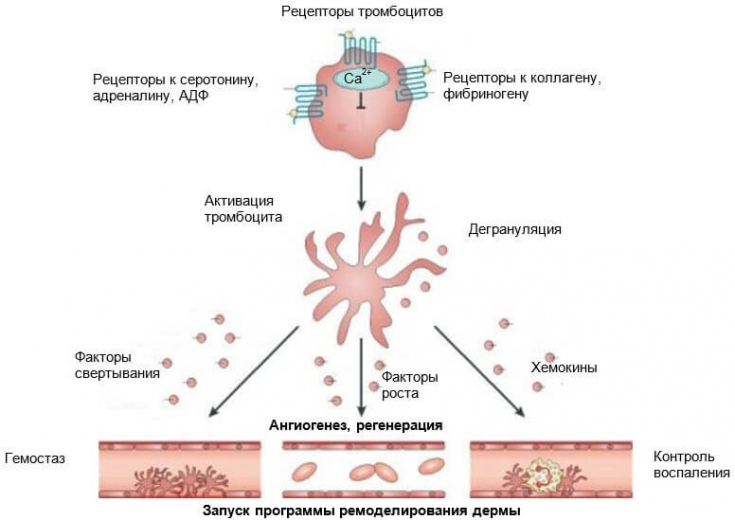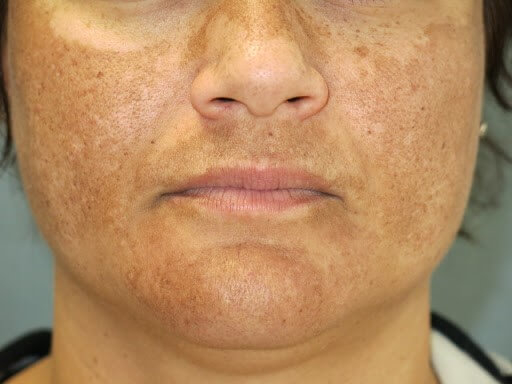PRP therapy is commonly used in dermatology and plastic surgery, especially for the treatment of chronic wounds, ulcers and burns. In recent years, PRP therapy has also begun to be used in the field of cosmetology.
are the main applications of PRP in cosmetology. However, in recent years evidence has begun to emerge that PRP therapy is also effective for treatment of pigmentary disorders such as melasma. At estet-portal.com read
new studies on the effectPRP therapy on the course of melasma.
- How does PRP therapy affect the course of melasma
- Studies on the effectiveness of PRP therapy for the treatment of melasma
- The results of the influence of PRP therapy on the course of chalkzma How does PRP therapy affect the course of melasma
The most important components of platelets are contained in
α-granules.
These granules contain > 30 biologically active substances, some of which include:platelet-derived growth factor (PDGF);
- transforming growth factor (TGF) - .beta.1,2;
- epidermal growth factor;
- mitogenic growth factors such as platelet-derived angiogenesis factor and fibrinogen.
- Studies on transforming growth factor TGF-β1 have shown that it significantly inhibits melanin synthesis.
Telegram! Pigmentary improvement that occurs with PRP treatment may also be due to
an increase in skin volume.

PDGF plays an important role in the formation of blood vessels, as well as the synthesis of collagen and extracellular matrix components, including hyaluronic acid.
hyaluronic acidhas been shown to increase skin tone and volume, resulting in more "radiant" skin. Research on the effectiveness of PRP therapy for the treatment of melasma
Platelet rich plasma (PRP) injections may be an
effective alternative or adjuvant therapy for melasma, according to a pilot study published September 30, 2019 in the Journal of Cosmetic Dermatology.
Autologous plasma and its possibilities in facial skin rejuvenation Thai researchers studied 10 women with bilateral mixed melasma who received
intradermal injections of platelet-rich plasmaon one side of the face. The other half of the face was injected with saline as a control.

Their treatment protocol included four sessions of PRP therapy, each one every two weeks.
Investigators instructed patients to usesunscreen
, avoid sun exposure, and use special moisturizers and cleansers, while avoiding any skin-whiteningskin care products. The results of the influence of PRP therapy on the course of melasma
Scientists found that mean melasma severity index values decreased significantly from 4.92 to 3.5 on the side treated with PRP –
28.9% improvementaccording to study. For controls, melasma severity scores decreased from 4.98 at baseline to 4.53 at week 10 –
9% improvement
Platelet-rich plasma: new developments in aesthetic medicine Mean melanin levels changed from 0.61 at baseline to 0.57 at week 6. However, the level of melanin on both sides of the face was practically the same at the end of the study. However, there is a
trend towards a gradual decrease in melanin levels with PRP treatment.The level of redness did not change significantly on either the PRP treated side or the control side. However, the half of the face treated with PRP showed a marked reduction in wrinkles compared to the control side.
More useful and interesting information on our channel onYouTube:






